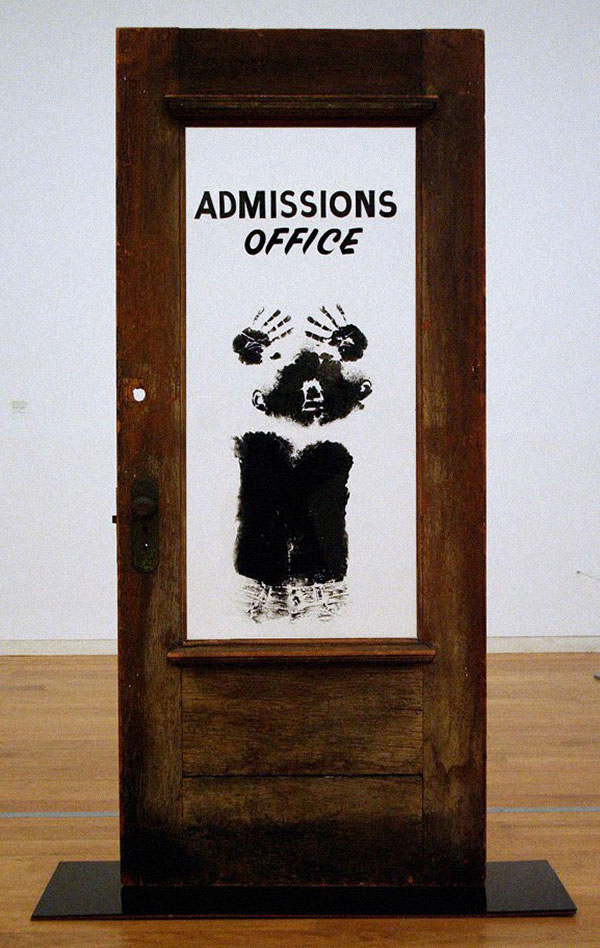Ralph Ellison, Invisible Man (Signet Books, 1952), 1.
The repetition and shift in font size is meant to reflect “echo” as concept, progressed through this essay.
Italics added by me for emphasis on relation to base matter.
Ellison, Invisible Man, 6.
The “non” is meant to express the existential endurance of blackness, especially black subjects, in obscurity.
Ellison, Invisible Man, 9.
Nathaniel Mackey performatively voices and reflects this phrasing in From a Broken Bottle Traces of Perfume Still Emanate: Volumes 1–3 (New Directions, 2010), 25. Here it expresses marginalization of black subjects, their reaching for expressions beyond convention, and the logic of creative acts that refuse access.
Nina Simone, “In the Dark,” Nina Simone Sings the Blues (RCA Victor, 1967.)
Georges Bataille, “The ‘Old Mole’ and the Prefix Sur in the Words Surhomme (Superman) and Surrealist,” in Visions of Excess: Selected Writings, 1927–1939, ed. Allan Stoekl (University of Minnesota Press, 1985), 32–44, 35.
Karl Marx, The Eighteenth Brumaire of Louis Bonaparte, marxists.org, 61 →.
Bataille, “The ‘Old Mole,’” 34.
Bataille, “The ‘Old Mole,’” 34.
Bataille, “The ‘Old Mole,’” 35.
This directive is included by the author to highlight the importance of performing this citation.
Funkadelic, “One Nation Under a Groove,” One Nation Under a Groove (Warner Bros., 1978).
Aretha Franklin, “Spirit in the Dark,” Spirit in the Dark (Atlantic, 1970).
E. Franklin Frazier, Black Bourgeoisie (Free Press Paperbacks, 1997), 20.
Frazier, Black Bourgeoisie, 24.
Funkadelic, “One Nation Under a Groove.”
“Enframing” (Gestell) is meant to reference Heidegger’s use of the term when he explores the role that technology plays in circumscribing events. The term is used in his essay “The Question Concerning Technology.”
Frazier, Black Bourgeoisie, 24.
Clement Greenberg, “Avant-Garde and Kitsch,” in Art and Culture: Critical Essays (Beacon Press, 1989), 16.
Wallace Willis, “Steal Away to Jesus,” ca. 1862.
Benjamin Noys, “Georges Bataille’s Base Materialism,” Cultural Values 2, no.4 (1998): 499–517, 500.
Georges Bataille, “The Big Toe,” in Visions of Excess: Selected Writings, 1927–1939, ed. Allan Stoekl (University of Minnesota Press, 1985), 20–23, 20.
Noys, “Georges Bataille’s Base Materialism,” 501
Noys, “Georges Bataille’s Base Materialism,” 510.
Robin D. G. Kelley, “Foreward” to Cedric J. Robinson, Black Marxism: The Making of the Black Radical Tradition (University of North Carolina Press, 2000), xiii.
Robinson, Black Marxism, 310.
Nina Simone, “In the Dark.”
Thorstein Veblen, The Theory of the Leisure Class (Oxford World Classics, 2009), 43.
Morris Day and The Time, “Jungle Love,” Ice Cream Castle (Warner Bros.. 1983). While Morris Day’s demand for a mirror is not mentioned in the official lyrics, it is performed in Prince’s movie Purple Rain, which features a performance of “Jungle Love” by the band.
Boris Groys, “Becoming Revolutionary: On Kazimir Malevich,” e-flux journal 47 (September 2013) → .
Groys, “Becoming Revolutionary.”
Groys, “Becoming Revolutionary.”
W. E. B. Du Bois quoted in Cedric J. Robinson, “Du Bois and Black Sovereignty: The Case of Liberia”, Race & Class 32, no. 2 (1990): 39-50.
Groys, “Becoming Revolutionary.”
B. B. King, “Nobody Loves Me But My Mother,” All Blues (Lucas Records, 1999) →.
